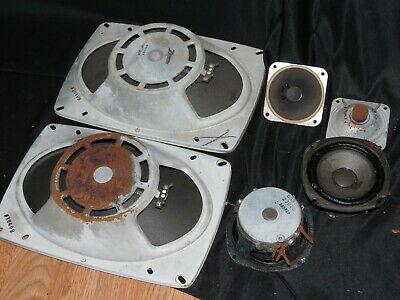Introduction
Also known as an inverted open-hole box, a low-frequency radiation speaker is a type of speaker with an inverted hole (slot) on the speaker panel. Because of the holes, the sound inside the box can be radiated to the outside.
Phase-inverted speakers, also known as low-frequency radiation speakers, are also the most commonly used cabinet designs in multimedia speakers. The difference between it and the closed speaker is that the front of the speaker is designed with a cylindrical inverted hole to circulate the air inside and outside the box. It has a higher power capacity and lower distortion than a closed box, and the volume is sufficient. , High sensitivity, not only suitable for general households, but also for halls or professional places.

The inverted speaker is a widely used speaker. The theory of inverted speakers was proposed by ALThuras as early as 1932. In 1952, BNLocanthi proposed the calculation method of the interaction between the diaphragm and the gas of the inverted hole, which promoted the development of inverted speakers. In 1961, ANTniele used Novak to determine the simplified model that gave the inverted speaker a mature and practical design. It published many practical design methods in detail, and later RHSmall also designed the full method of inverted speakers. Publish more practical and meaningful articles. In the course of decades of development, phase-inverted speakers have gradually matured.
The difference between it and a closed speaker is that an inverter tube is installed on the panel of the speaker. When the speaker is working, the sound waves radiated from the back pass through the inverter tube and radiate to the front. The sound waves are superimposed and then radiate forward together to enhance the low-frequency effect. The characteristic of the inverted speaker is that it can use the resonance of the cabinet and the inverter to expand the low frequency under the condition of the sound pressure of the speaker unchanged, and its low frequency can be expanded to 0.7 times the resonance frequency of the speaker. Compared with a closed speaker that reproduces the same frequency, an inverted speaker is 70% smaller in volume than a closed speaker, so the power amplifier output power requirement is lower than that of a closed speaker. The inverter tube can reduce the amplitude distortion of the speaker near the lower limit frequency of the low frequency, but the transient characteristics of the inverter speaker are worse than the closed speaker.
A well-designed inverted speaker can further expand the lower limit frequency of low-frequency balanced playback without reducing the sound volume. We know that the speaker unit has a basic resonance point frequency. At this frequency, the output sound will be the largest, and the distortion will also be the largest. If it is not controlled, it will inevitably cause the unevenness of the low frequency band of the sound box to increase. , The balance deteriorates and the distortion increases sharply. A reasonably made inverted speaker should be able to lower the basic resonance peak of the speaker, making it into two small peaks separated from the left and right, and the two small peaks are equal in size, so that the small peak that extends to the low end will also make the speaker The frequency response is further extended to low. Obviously, after the basic vibration peak pressure is lowered, the distortion is also significantly reduced. This is because the horn's vibration at this point is in an anti-resonant state, and near this frequency, the amplitude of the vibration becomes smaller. In order to take advantage of these advantages of inverted speakers, the designer must clearly understand the meticulous design chosen to get the ideal replay effect. It is not just a chance to open an inverted hole to succeed. Inverted speakers also have strict requirements on the Qo of the unit. Without a specific Qo value, the advantages of inverted speakers cannot be fully utilized, and the adjustment procedures are also more complicated.
Disadvantages
Although the inverted speaker has the advantages of high efficiency, good low frequency characteristics and small size, it also has disadvantages. The main reason is that it is difficult to design and make adjustments. For example, the inverter hole cannot be opened too large just for efficiency, otherwise it will form a peak. At the same time, the length of the inverter hole will also have a greater impact on the low frequency, and poor design will easily produce bass. If the problem is too loud, there may also be problems such as too loud airflow. Compared with closed speakers, inverted speakers have poorer transient characteristics in the low frequency range, and the sound performance is somewhat unnatural. Because inverted speakers use the sound waves on the back of the speaker to be reflected in the cabinet for a period of time, so The phase is not very accurate. At the same time, the reflected sound wave must be a step slower than the direct sound from the front of the speaker. Therefore, the phase inverter box emits a kind of "false" low frequency, which is not as accurate as a closed speaker.
